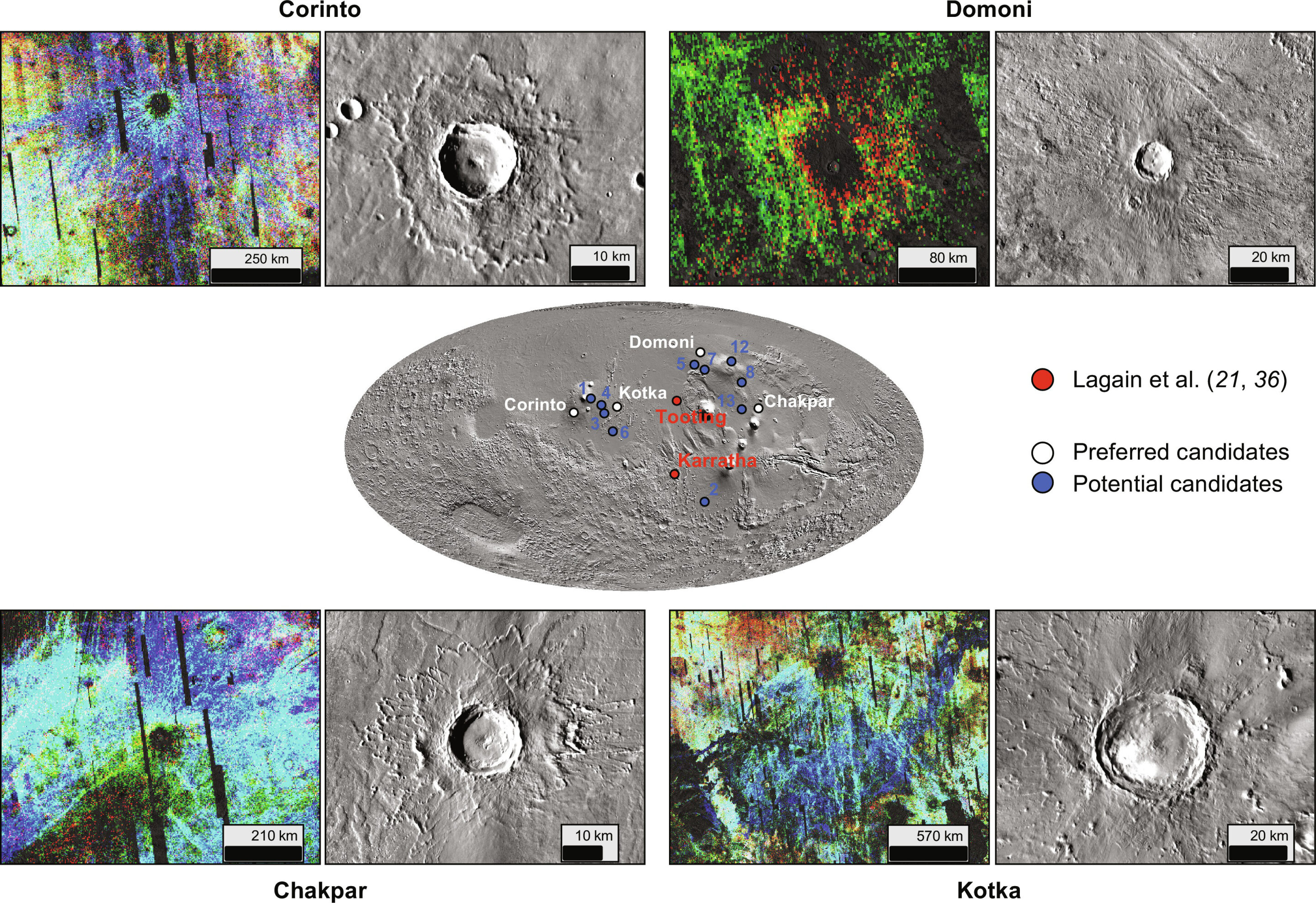
Researchers have identified the specific locations from which most of the approximately 200 Martian meteorites originate. They’ve traced the meteorites to five impact craters within two volcanic regions on the red planet called Tharsis and Elysium. Their study was published recently in the journal Science Advances.
Martian meteorites find their way to Earth when something hits the surface of Mars hard enough so that material is “blasted off the surface and accelerated fast enough to leave Mars’ gravity,” says Chris Herd, curator of the U of A’s Meteorite Collection and professor in the Faculty of Science. This ejected material launches into space, ends up in an orbit around the sun, and some eventually falls to our planet as meteorites. The blast leaves an impact crater on Mars’ surface. This happened 10 times in Mars’ recent history.
“We think we’ve found the source craters for half of all 10 groups of Martian meteorites,” says Herd.
He says that scientists’ improved understanding of the physics of exactly how the rocks are ejected from Mars was key to this finding. The findings from this study are a step towards unlocking the mysteries of Mars, as previous attempts to determine the precise sources of Martian meteorites were met with limited success.
“Now, we can group these meteorites by their shared history and then their location on the surface prior to coming to Earth,” Herd says.
More knowledge about how and where on Mars these meteorites originate gives us additional insight into the samples we already have on Earth. The ability to contextualize and position these samples within the Martian geology for the first time “will enable the recalibration of Mars’ chronology, with implications for the timing, duration and nature of a wide range of major events through Martian history.”
“One of the major advances here is being able to model the ejection process, and from that process be able to determine the crater size or range of crater sizes that ultimately could have ejected that particular group of meteorites, or even that one particular meteorite,” says Herd. “I call that the missing link—to be able to say, for example, the conditions under which this meteorite was ejected were met by an impact event that produced craters between 10 and 30 kilometers across.”
The knowledge about the origin of meteorites, combined with advances in technology like remote sensing, gives researchers a framework to build on. Herd says we can also narrow down potential places on Mars that are the origin of meteorites we have yet to investigate. “To do it, we’ll need certain details about when and how a meteorite was blasted from Mars and how old it was when it crystallized at the surface of that planet,” Herd explains.
“It allows us to say, of all these potential craters, we can narrow them down to 15, and then from the 15 we can narrow them down even further based on specific meteorite characteristics.”
“We can maybe even reconstruct the volcanic stratigraphy, the position of all these rocks, before they got blasted off the surface.” Stratigraphy is the geological record of a planet, comprising layers of sedimentary or, as in this case, volcanic rock. Think of it like a book, where the rock layers are pages, and from them scientists can look for clues about past environments on the planet. https://phys.org/news/2024-08-martian-meteorites-red-planet.html








Recent Comments